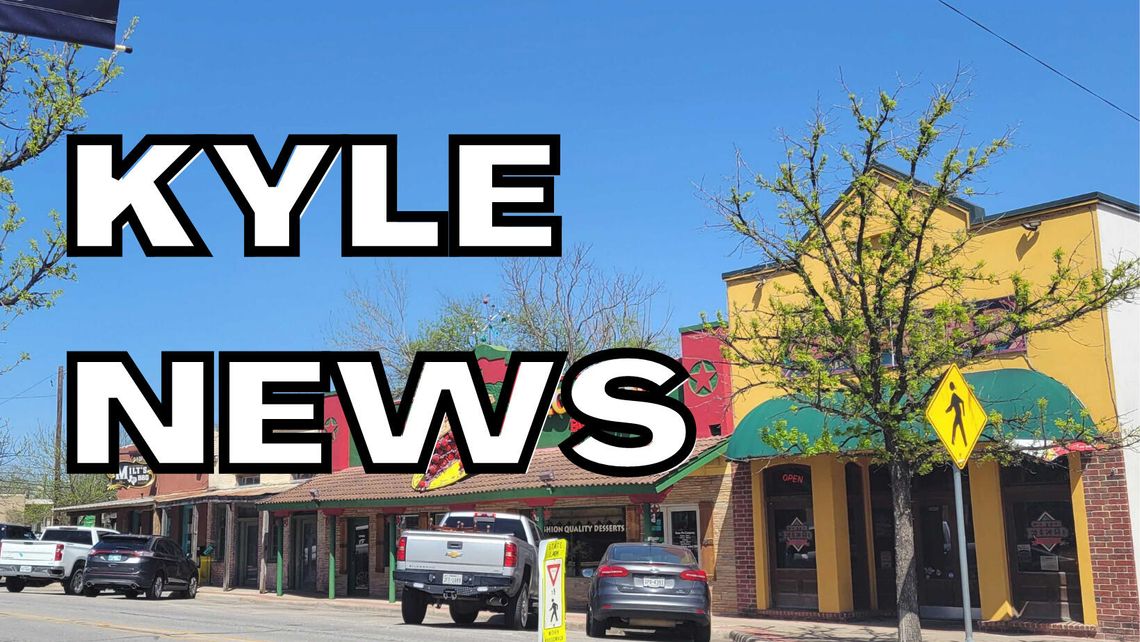KYLE — For the first time in 15 years, the city of Kyle is utilizing unique methods to ensure residents and businesses have adequate water available.
In December, city council signed an interlocal agreement with San Marcos, which makes Edwards Aquifer water from San Marcos’ permitted allowance available to Kyle.
Currently, Kyle is permitted to receive water from three different sources: the Guadalupe-Blanco River Authority (GBRA), Barton Springs (BS) and the Edwards Aquifer Authority (EAA). Each permit has a maximum allotted amount of water annually, with GBRA being the largest source.
BS and EAA have a maximum capacity; however, this amount is adjusted based on the drought stages declared throughout a given year.
In June of 2022, the Public Works Department started to have concerns that the city would exceed its EAA permit allotment due to the “historic” drought.
At the same time, the Barton Springs Edwards Aquifer Conversation District (BSEACD) declared an Alarm Drought status (Stage II), requiring a 20% reduction of allotted water for lease holders.
Brian Smith, principal hydrogeologist for BSEACD, explained that while EAA and BS respond a bit differently based on source location, rainfall and pumpage, the drought stages are fairly similar.
“The concept of a drought stage is the same if you cross some threshold. When we’re deep into drought, they track the same,” Smith said.
Due to the reduction and drought forecast, city staff began to reach out to surrounding cities in hopes of being able to share water from a neighbor’s EAA permitted allowance.
“To be frank, they [San Marcos] are the only ones who had sufficient capacity that they felt comfortable with working an agreement with the city of Kyle,” public works treatment operations manager Timothy Samford said. “I reached out to many others that were willing to work with us, but they were also not willing to work with us as early as San Marcos because of the drought that we are in.”
Based on permit numbers, Kyle was allotted approximately 6,574.97 acre-feet (AF) for 2022. This included the following amounts: 5,443 AF from GBRA; 815.18 AF from BS (permitted 1,074, reduced based on drought stages for the year); and 316.79 AF from EAA (permitted 432, reduced by 26.68% due to drought conditions.)
Ultimately, the city had, on average, 5.87 million gallons of water per day available for use.
Per the arrangement, San Marcos agreed to share up to 125 AF of water from its EAA authorized allotted capacity. The temporary agreement, which ended on Dec. 31, occurred utilizing Kyle’s existing facilities and wells.
The cost for the shared water included a fixed monthly rate of $7,745 for October, November and December. Additionally, Kyle was charged $3.21 per 1,000 gallons, for a maximum total of $153,997.71. Should the city of Kyle have used fewer than 125 AF, the amount would be adjusted.
Samford and public works director Harper Wilder recalled a previous drought in the area.
“Last time we had water issues was back in ’08 or ’09 when we were talking about breaking [exceeding] permits. Back [then], we didn’t have the storage facilities available. And throughout that time, until now, we have steadily, continually added storage facilities … We are much better off than we were in ‘08/’09 … We are in this position now because of an historic drought and that’s really important because we are at an unprecedented time, from what I’ve been told and what I understand.”
Similarly, Smith said BSEACD is monitoring the drought conditions closely.
“We’ve been in this critical condition before. The last time we were in Critical [Drought status] was in 2013. That’s a good 10 years now; we have been in Alarm stage, but then it rains,” Smith said. “We are on the verge of going into Stage IV Exceptional, which we have never reached in our area. That would be something new for us in our 35 years. We watch very closely; we need to be protective of the ecosystem. We are also concerned for our users.”
The crux of the city’s plan to ensure water availability for the future is conservation.
“Obviously, water is a valuable resource in Texas, particularly Central Texas. We’re not going to run out of water. But the cost to acquire more water is getting exponentially more expensive,” interim city manager Jerry Hendrix said. “So, the incentive to conserve is as much a conservation of natural resources issue as it is a monetary issue. The more water we have to acquire, the higher the bills are going to be and we’re committed to keeping water bills as low as possible. But we need the help of all of our partners in the city — our residents and our contractors and our builders — to work with us to conserve that resource so that we don’t have to go out and acquire more water.”










